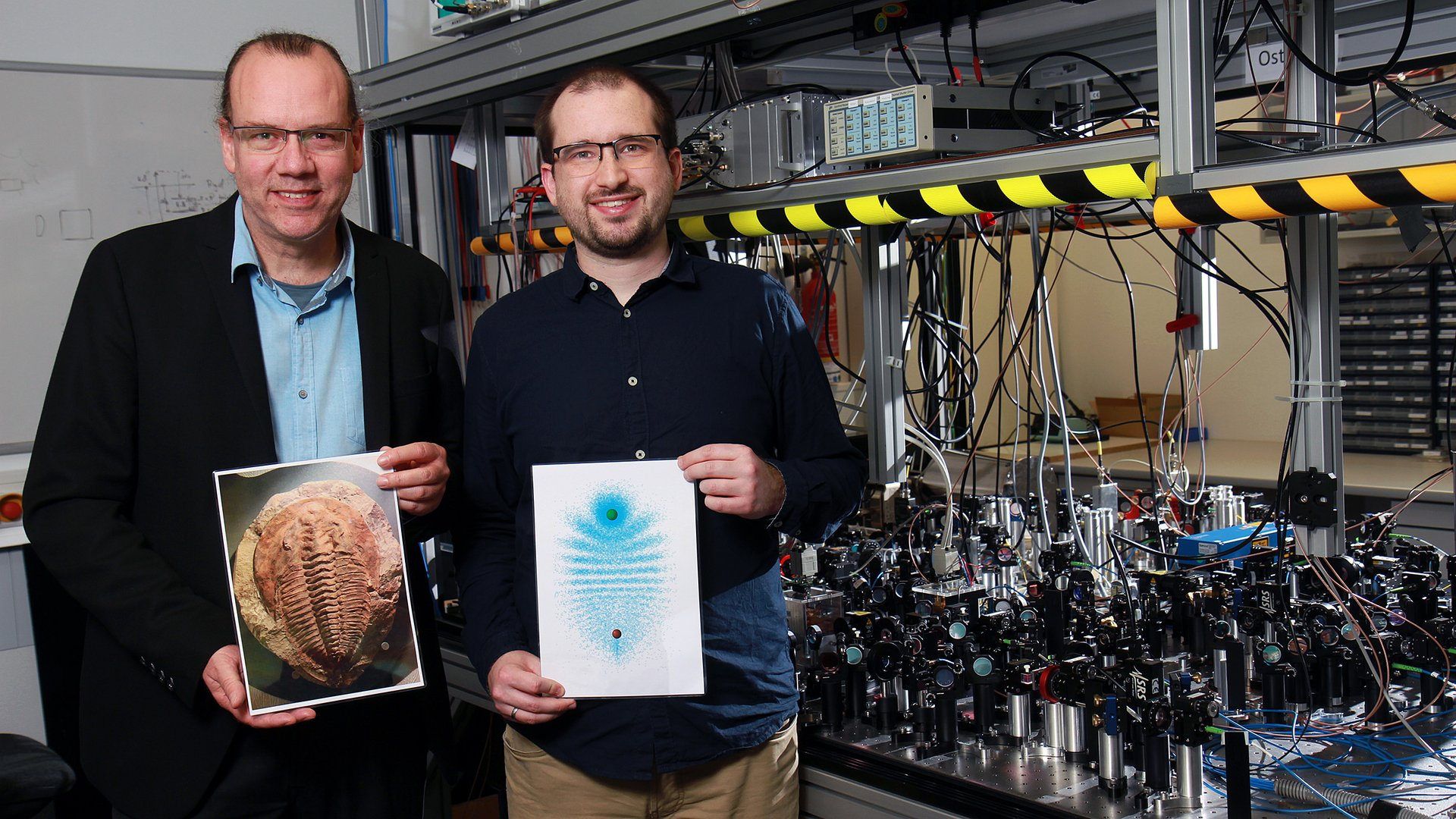Physicists using lasers to cool atoms close to absolute zero have produced an electron orbit so large it barely seems possible. By placing a conventional atom inside this giant, they produced a bizarre shape reminiscent of fossil trilobites, arthropods that once dominated the oceans.
The element rubidium is little known outside those who can perform Tom Lehrer’s Elements Song. However, it’s very popular among scientists seeking to study the world at close to absolute zero, since rubidium atoms are particularly suited to laser-cooling to very low temperatures.
Professor Herwig Ott of the University of Kaiserslautern-Landau and colleagues cooled a rubidium cloud to one ten-thousandth of a degree above absolute zero. This is positively toasty compared to some others who have achieved temperatures of trillionths of a degree. It is, however, sufficient to allow further laser twiddling to put the atoms in a Rydberg state, where the outmost electron orbits expand to a radius of about a micrometer. This, Ott noted in a statement, makes “the electron cloud larger than a small bacterium.” With the electrons so detached from their nucleus, the atoms become highly chemically reactive.
Improbable as it may seem, an atom this large can have another, ordinary-sized atom, inside it, nestled between the Rydberg atom’s nucleus and typical locations for the outer electron. This, in turn, allows a form of bonding more exotic than the covalent and ionic bonds you might have learned in high school, or the still-conventional metallic or dipolar bonds.
“Imagine the electron rapidly orbiting around the nucleus. On each round trip, it collides with the ground state atom. In contrast to our intuition, quantum mechanics teaches us that these collisions lead to an effective attraction between the electron and the ground state atom,” explained first author Max Althön.
This type of interaction was known prior to this work, but this has revealed it clearly enough to measure aspects that were previously hazy. Being a quantum phenomenon under conditions where the atoms are expressing their wave-particle duality, the interactions of the large radius electron and the ground-state atom are statistical. They produce an interference pattern, like those from the famous two-slit experiment.
The interference patterns end up looking like butterflies or trilobites, depending on the conditions, and it is the latter that the team has created. Other people have tried to produce images of these using one and two photon-excitation, with partial success in the latter case. Here, the team demonstrated the power of three-photon excitation to couple Rubidium’s ground state with excited states.

Professor Herwig Ott and Max Althön holding up the respective images in front of the equipment used to produce the pattern
Image Credit: RPTU, Koziel
The attraction of the electron to the ground state atom in these trilobite molecules is so strong it could be the subject of a rom-com. Instead, we get an electric dipole, where the trilobite’s “tail” (where the Rydberg atom’s core is located) is very positive. The ground state atom sits at the head, while the electron is probabilistically distributed through both head and legs, which therefore become negatively charged.
Dipole moments increase the further apart charges are, and the authors report this one is 1,700 Debye. For comparison, potassium bromide, used as an example of an ionic molecule with a very large dipole moment, is 10.4 Debye, less than 1 percent as large.
A big dipole moment makes a molecule easy to control using external electric fields. Potentially, such molecules could be used for information processing, since these fields can change their state. More immediately, it allows scientists to explore their properties in ways that aren’t available for other molecules.
The work is published open access in the journal Nature.
Source Link: Ultra-Cooled Trilobite-Shaped Molecules Have A Charge In The Tail